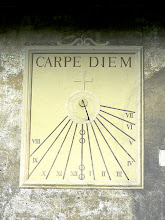SACRED HYEROGAMY



PHOTOS :
1.- Sky-Clouds, as a symbol of God
2.- The primordial hermetic Androgyne
2.- Vesica-Pisces and the Icthys christian symbol
_________________________________________________
HIEROGAMY
*********
The role of the temple prostitute was a highly respected one deemed sacred, and many high-born ladies took the office.
Sargon II’s daughter was a temple prostitute, as was Assurbanipal’s.
In fact, most women were taken to the temple at the age of puberty to give their virginity as an offering to the gods.
Julius Evola says in The Metaphysics of Sex that:
“These ritual or religious unions of man and woman were intended to renew or celebrate the mystery of the Ternary, or union of the everlasting male with the everlasting female (sky with Earth), when should arise the central current of creation.
The corresponding principles were embodied and activated, and their momentary physical union became an effective and evocative reproduction of divine union beyond time and space.”
An interesting variation on this took place in Babylon, where once a year, a virgin would ascend by night to the very apex of the seven-tiered holy ziggurat.
The high holy place was a bed chamber thought to be inhabited by God himself.
The virgin spent the night there, presumably being deflowered by God the Father. Says Evola, “It was also believed that the priestess of Apollo at Patara passed the night on the ‘holy bed’ in union with the god.”
Mircea Eliade, writing about the ritualistic orgies used to invoke the divine couple, said:
“The orgy corresponds generally to the holy marriage.
The limitless genesiac frenzy on Earth must correspond to the union of the divine pair. The excesses play a very precise part in the arrangement of the sacred; they sunder the barriers between man and society, nature and the gods; they help in circulating the force, life, and seeds from one level to another and from one zone of reality into all the others.”
Indeed, ceremonies such as this gave ancient man a chance to tangibly experience the sacrum, to invoke and manifest, within himself, the archetype of God by becoming, if only briefly (and symbolically) one-half of the divine couple.
Though the gods and goddesses of the ancient cultures we’ve examined may at first glance appear to have no connection to the later creeds of Judaism and Christianity, such is not the case.
Even Judaism (a relative newcomer in the context of the theologies thus discussed) had its own divine couple in the persons of El and Asherah, who appear to be the Judaic equivalent of the older Babylonian Baal and Astarte. It is thought that the Jewish move towards monotheism was necessitated when the notion of the divine couple became lost, as polytheistic cultures interacted with the Jews, giving rise to an increasingly confusing proliferation of deities, both foreign and domestic.
The emerging Jewish nation needed to be united into a single will if it was to survive. And in order to accomplish this task, the polytheistic miasma of gods and goddesses, of belief and counter-belief, had to be transcended.
Thus began the emergence of patriarchal monotheism, with its harsh father figure, Jehovah. El and Asherah were vanquished, and in time, Asherah was even turned into a male demon, Astaroth.
Despite all of this, even in the context of patriarchal monotheism, rabbinic tradition records that even Jehovah once had a consort named Lillith.
This goddess figures prominently in rabbinic lore, and is said to have left the side of God to come to Earth as Adam’s first wife. She bore Adam his first son Cain, but being of a haughty and rebellious nature, she refused to submit to Adam’s rule, eventually leaving him.
Some traditions record that she went off to live at the bottom of the Red Sea with Asmodeus, the demon who plays so prominent a role in the mystery of Rennes-le-Chateau. In due course, we will examine this scenario in far greater depth.
Be it Ia and Inana, Isis and Osiris, Odin and Freya, Zeus and Hera, Kronos and Rhea, Ouranos and Gaia, Baal and Astarte, or El and Asherah, the names may vary, but virtually every culture has had a version of the divine couple.
Before the formulation of the notions of good versus evil, or God versus the Devil, Man understood duality in terms of male and female, Sun and Moon, fire and water, and the divine couple represented an equilibrium between these opposing forces; a marriage, if you will, between the two.
Ancient man seems to have had a far better understanding of the schematic upon which the universe operates than does his modern counterpart. At the most elemental level, most of the so-called “secret doctrines” seem to preserve this understanding.
The divine couple was not a duad of man and woman, but a triad.
The third element was the equilibrium between the eternal male principle and the eternal female principle.
And from the resultant harmony of the Ternary, we arrive at One.
This seems to represent an idea central to the ancient understanding of the sacred, and can be glimpsed in its purest, most elemental form in a tradition undoubtedly of far greater antiquity still:
The worship of the primordial hermaphrodite, and the ritualized practice of sacred sex.
This idea was into the sign of Vica-Pisces, which was subtitued by the christian
symbol of Icthys.
=========================


0 Comments:
Post a Comment
<< Home